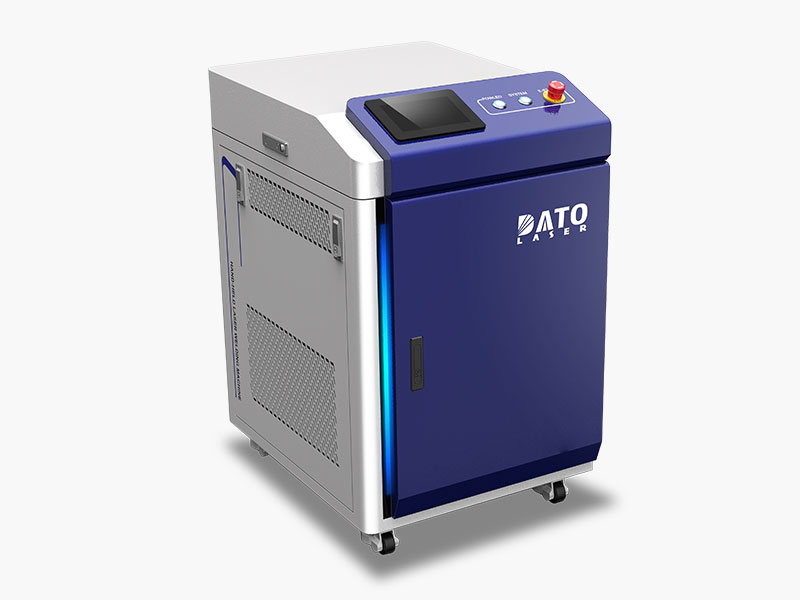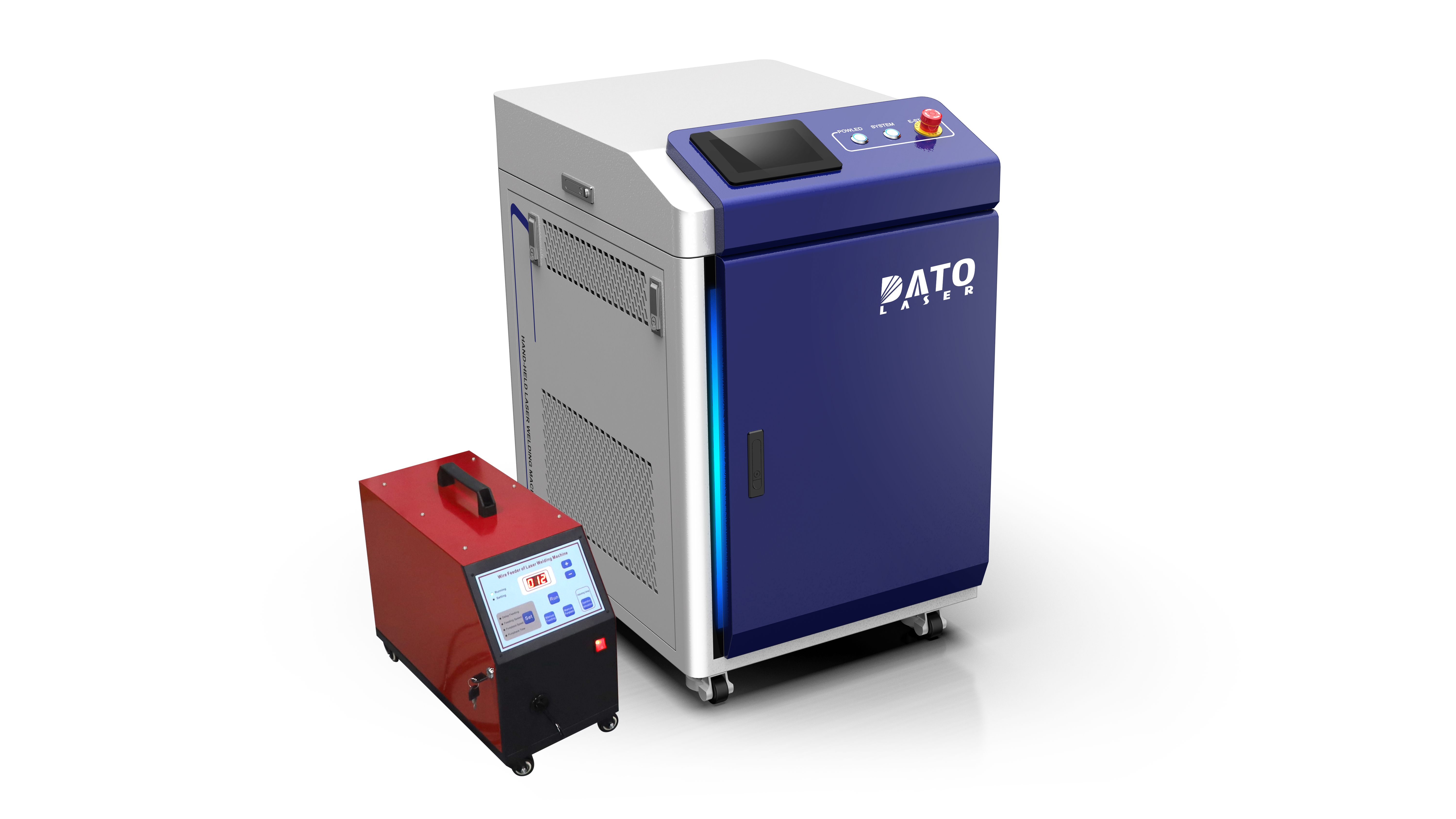What Role Does Laser Welding Machine Power Play in Achieving High-Quality Welds?

Understanding the Importance of Laser Power in Welding
Laser welding has revolutionized modern manufacturing, offering unparalleled precision, speed, and efficiency. Among the many factors influencing weld quality, laser power plays a pivotal role. The correct laser power setting ensures strong, defect-free welds, optimizing both material integrity and production efficiency. For businesses seeking to integrate fiber laser welding machines, understanding how laser power affects the welding process is crucial.
The Fundamentals of Laser Power in Welding
Laser power refers to the energy output of the laser beam, typically measured in watts (W) or kilowatts (kW). This power level determines the intensity of the laser beam, affecting penetration depth, weld width, and overall weld quality. Higher laser power is generally required for thick and highly reflective metals, while lower power settings are sufficient for thin materials and delicate applications.
Several key factors influence the required laser power in a welding operation:
Material type and thickness
Welding speed and process stability
Beam focus and spot size
Shielding gas and heat conduction properties
How Laser Power Affects Weld Quality
1. Penetration Depth and Weld Strength
The depth to which a laser beam can penetrate metal depends largely on the power of the laser. High-power lasers are capable of deep penetration welding, making them ideal for applications in industries such as automotive manufacturing, shipbuilding, and aerospace. Deep penetration welding produces strong, durable joints, reducing the likelihood of weld failures under stress.
For example, a 3kW fiber laser can weld stainless steel up to 4mm thick with ease, while a 6kW laser can penetrate materials up to 10mm. If the power is too low for the material thickness, the weld may be weak and prone to cracks or porosity.
2. Heat Input and Thermal Management
Excessive laser power can generate excessive heat, leading to material distortion, warping, or even burn-through. Controlling laser power is essential to maintaining the structural integrity of components, particularly when welding heat-sensitive materials such as aluminum or thin stainless steel sheets.
Modern laser welding machines feature adjustable power settings, allowing operators to fine-tune the output for optimal results. Pulse modulation and real-time power control help prevent overheating, ensuring high-quality welds with minimal thermal damage.
3. Weld Aesthetics and Precision
Aesthetics play a crucial role in applications such as jewelry making, medical device manufacturing, and electronics. The correct laser power ensures smooth, spatter-free welds with minimal discoloration. Lower power settings are preferable for precision applications where excess energy could cause unwanted surface defects or material degradation.
For example, welding thin sheet metal for decorative applications requires precise power control to prevent burn marks and maintain a polished appearance.
4. Welding Speed and Productivity
Higher laser power enables faster welding speeds, significantly improving production efficiency. Industries that demand high-output manufacturing, such as the automotive and electronics sectors, benefit from increased throughput without compromising weld quality.
For example, a 6kW fiber laser welding machine can operate at speeds of up to 2 meters per minute on medium-thickness stainless steel. However, excessive speed combined with insufficient power may result in weak welds with incomplete fusion, compromising structural integrity.
Choosing the Right Laser Power for Your Application
The ideal laser power setting varies based on material properties, joint configuration, and production requirements. Here are some general guidelines:
Thin materials (0.5mm - 2mm): 500W - 1.5kW
Medium-thickness materials (2mm - 6mm): 2kW - 4kW
Thick materials (6mm+): 4kW - 10kW
For specialized applications such as welding copper or aluminum, which have high reflectivity and thermal conductivity, higher power and optimized beam parameters may be required.
Advancements in Laser Welding Technology
With continuous advancements in fiber laser technology, modern laser welding machines now offer:
Adaptive power control for consistent weld quality
Real-time monitoring systems to adjust laser parameters on the fly
Automated welding solutions that optimize power settings based on material properties
These innovations enhance the precision and versatility of laser welding, making it a preferred choice across industries.

Conclusion: Maximizing Weld Quality with Optimal Laser Power
The power of a fiber laser welding machine is one of the most critical factors influencing weld quality, penetration depth, speed, and overall efficiency. Selecting the right power level ensures strong, durable, and visually appealing welds while minimizing defects and material distortion.
For businesses investing in laser welding technology, understanding how to optimize laser power settings is essential to achieving consistent, high-quality results. With the right equipment and process knowledge, fiber laser welding can deliver superior performance across a wide range of industrial applications.
Since 2007, Dato Leapion Laser has been a leader in the fiber laser cutting industry. Our commitment to research and quality delivers advanced fiber laser cutters, laser welders, and laser rust remover.
Related Blogs
-
 Exploring the Safety, Precision, and Industrial Benefits of Laser Surface CleaningIn today’s fast-paced industrial world, where quality, efficiency, and sustainability are top priorities, manufacturers are constantly seeking better ways to clean metal surfaces without compromising material integrityBlog
Exploring the Safety, Precision, and Industrial Benefits of Laser Surface CleaningIn today’s fast-paced industrial world, where quality, efficiency, and sustainability are top priorities, manufacturers are constantly seeking better ways to clean metal surfaces without compromising material integrityBlog -
 A Complete Guide by DATO and LeapionIn modern industry, surface preparation and maintenance play a crucial role in achieving high-quality manufacturing results. Laser cleaning machines have emerged as one of the most innovative, efficient, and environmentally friendly tools for removing contaminantsBlog
A Complete Guide by DATO and LeapionIn modern industry, surface preparation and maintenance play a crucial role in achieving high-quality manufacturing results. Laser cleaning machines have emerged as one of the most innovative, efficient, and environmentally friendly tools for removing contaminantsBlog -
 Laser cleaning machines are revolutionizing industrial surface cleaning by offering a faster, safer, and more eco-friendly alternative to traditional methods. Whether removing rust, paint, oil, oxide, or other surface contaminants, laser cleaning has become a cutting-edge solution in manufacturing,Blog
Laser cleaning machines are revolutionizing industrial surface cleaning by offering a faster, safer, and more eco-friendly alternative to traditional methods. Whether removing rust, paint, oil, oxide, or other surface contaminants, laser cleaning has become a cutting-edge solution in manufacturing,Blog -
 Introduction: Transforming EV Battery Manufacturing Through Laser TechnologyThe electric vehicle revolution has accelerated dramatically over the past decade, bringing with it unprecedented challenges and opportunities in battery manufacturing. As global automakers commit billions to electrificationBlog
Introduction: Transforming EV Battery Manufacturing Through Laser TechnologyThe electric vehicle revolution has accelerated dramatically over the past decade, bringing with it unprecedented challenges and opportunities in battery manufacturing. As global automakers commit billions to electrificationBlog














